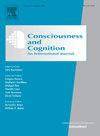Reverse-breaking CFS (rev-bCFS): Disentangling conscious and unconscious effects by measuring suppression and dominance times during continuous flash suppression
IF 2
3区 心理学
Q2 PSYCHOLOGY, EXPERIMENTAL
引用次数: 0
Abstract
Breaking continuous flash suppression (bCFS) is a widely used experimental paradigm that exploits detection tasks to measure the time an invisible stimulus requires to access awareness. One unresolved issue is whether differences in detection times reflect unconscious or conscious processing. To answer this question, here we introduce a novel approach (reverse-bCFS [rev-bCFS]) that measures the time an initially visible stimulus requires to be suppressed from awareness. Results from two experiments using face stimuli indicate that rev-bCFS can capture conscious effects, which indicates that contrasting standard bCFS with rev-bCFS can isolate unconscious processing occurring specifically during bCFS. For example, while face inversion impacted both bCFS and rev-bCFS, effects were larger in bCFS, suggesting a distinct contribution of unconscious processing to the advantage of upright over inverted faces in accessing awareness. Combining standard bCFS and rev-bCFS may offer a fruitful approach to disentangle conscious and unconscious effects occurring during interocular suppression.
逆断CFS (rev-bCFS):通过测量连续闪光抑制期间的抑制和支配时间来解开意识和无意识效应的纠缠
打破连续闪光抑制(bCFS)是一种广泛使用的实验范式,它利用检测任务来测量不可见刺激进入意识所需的时间。一个尚未解决的问题是,检测时间的差异反映的是无意识处理还是有意识处理。为了回答这个问题,我们引入了一种新的方法(反向bcfs [rev-bCFS]),该方法测量从意识中抑制最初可见刺激所需的时间。两个面部刺激实验的结果表明,rev-bCFS可以捕获意识效应,这表明将标准bCFS与rev-bCFS进行对比可以隔离bCFS过程中特异性发生的无意识加工。例如,虽然面部倒置对bCFS和rev-bCFS都有影响,但bCFS的影响更大,这表明无意识加工对直立面部比倒立面部在获得意识方面的优势有明显的贡献。结合标准bCFS和rev-bCFS可能提供有效的方法来解开眼间抑制过程中发生的意识和无意识效应。
本文章由计算机程序翻译,如有差异,请以英文原文为准。
求助全文
约1分钟内获得全文
求助全文
来源期刊

Consciousness and Cognition
PSYCHOLOGY, EXPERIMENTAL-
CiteScore
4.30
自引率
8.30%
发文量
123
期刊介绍:
Consciousness and Cognition: An International Journal provides a forum for a natural-science approach to the issues of consciousness, voluntary control, and self. The journal features empirical research (in the form of regular articles and short reports) and theoretical articles. Integrative theoretical and critical literature reviews, and tutorial reviews are also published. The journal aims to be both scientifically rigorous and open to novel contributions.
 求助内容:
求助内容: 应助结果提醒方式:
应助结果提醒方式:


